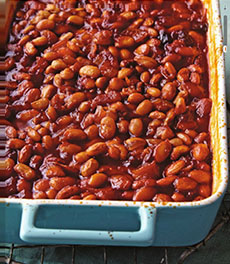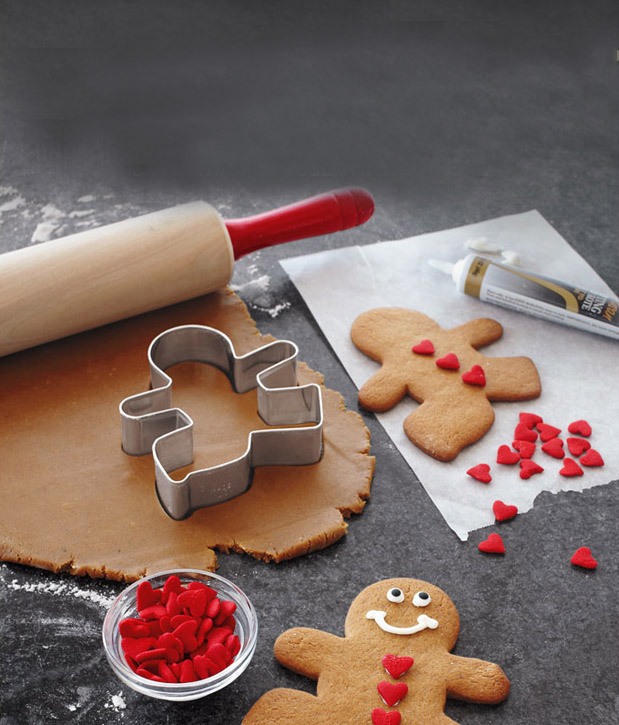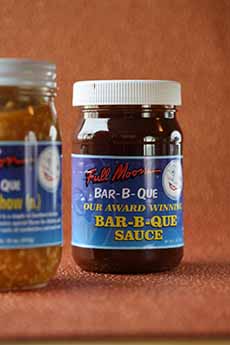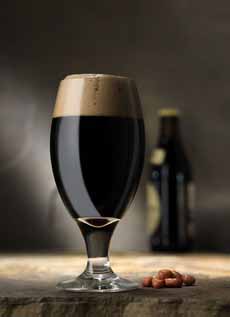Date Nut Molasses Bars Recipe For National Molasses Bar Day
|
February 8th is National Molasses Bar Day. How about whipping up a batch of chewy molasses bar cookies? Before there were chocolate brownies, there were molasses bars. What exactly is molasses? See below for the types of molasses and the “>history of molasses. This recipe, from Grandma’s Molasses, ups the chewiness and nutrition by adding nuts and dried dates. Walnuts are popular, and pistachios and dates are a classic Middle East combination, but you can use any nut you favor. Don’t like dates? Substitute chocolate chips. For a special dessert tonight, top a bar with a scoop of vanilla ice cream. Ingredients For 32 Bars 1. PREHEAT the oven to 350°F. 2. SIFT together the flour, salt, and baking soda. Set aside. 3. COMBINE the egg, sugar, molasses, shortening, and vanilla. Stir in the flour mixture, nuts, and dates. 4. LINE a 9 x 9 x 2-inch pan with wax paper, greased and lightly floured. Pour in the batter and bake for 40 minutes or until done. 5. TURN out onto a cooling rack; remove the wax paper. When cool, cut into 32 bars. Store in an airtight container. Molasses is a thick syrup produced as a by-product during the refining of sugar cane. Molasses is the residue that is left after the sugar crystals are extracted (i.e., molasses is produced when no more sugar may be economically crystallized by conventional means). Molasses is predominantly sucrose, with some glucose and fructose. It is 65% as sweet as sugar. The better grades of molasses, such as New Orleans drip molasses and Barbados molasses, are unprocessed and contain more sucrose, making them lighter in color. They are used in cooking and confectionery and in the production of rum. Molasses, a byproduct of refining sugar cane juice, has was in use in India by 500 B.C.E. [source]. The word molasses comes from the Portuguese melaço, which derived from the late Latin mellacium must (referring to grape must), based on the Latin mel, honey. In the 17th century, it was used in trade for slaves brought from Africa to the Caribbean. When sugar cane plantations were established in the Caribbean, much of the molasses was sold to New England, where distillers turned it into rum. On April 18, 1775, Paul Revere is said to have paused his famous ride in Medford, Massachusetts, at the house of Isaac Hall to warm himself with a slug or two of rum [source]. Before the Revolutionary War, it is estimated that colonists downed an average of four gallons of rum a year [source]. It warmed them in cold weather, and was safer than drinking water, which could come from tainted sources. The other use for rum in the Colonies was baking: baked beans, cakes, cookies, cornbread, doughnuts, gingerbread, mince pies, pumpkin pies, and the Pennsylvania Dutch shoofly pie. On the other side of the pond, in England, any candy made of molasses was called toffee, which later evolved into taffy. Molasses there is known as black treacle. Colonial molasses makers were not competing successfully against the non-British colonies. The Molasses Act of 1733, an Act of the Parliament of Great Britain, imposed a tax of six pence per gallon on imports of molasses, rum, and sugar from non-British colonies. The act was created largely at the insistence of large plantation owners in the British West Indies—not for the purpose of raising revenue, but to regulate trade by making British products cheaper than those from the French West Indies. This created a practical monopoly of the North American sugar market for the British West Indies sugarcane growers [source]. By the 1830s, a bride’s popularity was measured by the number of layers of molasses stack cake guests brought her [source]. Molasses remained the most popular sweetener through the 19th century. Used to sweeten drinks as well as confections, molasses was also used to flavor meat, especially pork and ham (the concept evolved into modern barbecue sauce). In addition to rum, molasses was used to create industrial alcohol for ammunition during World War I. Molasses used to be the most popular sweetener in the U.S., but after World War I, it was replaced by refined sugar, as a cheaper alternative. Another notable event in U.S. molasses history was the Great Molasses Flood, also known as the Boston Molasses Disaster, on January 15, 1919. A 50-foot-tall steel vat of molasses, weighing approximately 13,000 short tons (12,000 tons), burst in Boston’s North End, sending a tidal wave of more than 2 million gallons of molasses into Boston’s North End. The wave of molasses rushed through the streets at an estimated 35 mph, killing 21 people and injuring 150. It also resulted in $1 million in property damages ($16 million today). Clean-up took months, and for decades afterward, residents claimed that the area smelled of molasses on hot summer days [source]. Fortunately, there’s been no molasses excitement since then. Cooks continue to use molasses in much the same way it was used in Colonial times, Pomegranate molasses, also known as robb-e anâr and nar ekshisi, is a Persian syrup consisting of concentrated pomegranate juice flavored with sugar and lemon juice. It is usually used in fish and meat dishes. Similarly, you can find grape molasses, known as petimezi in Greece and pekmez in Turkey. Cherry molasses is popular in Turkish cuisine. Here’s a recipe. Sour plum (and other sour fruit) molasses is a staple in Northern Iranian cooking. Here’s a recipe. No matter what type of molasses appeals to you, make something with it that’s new for you. There’s no better reason than expanding your culinary horizons. |
|
|
|
|
||








